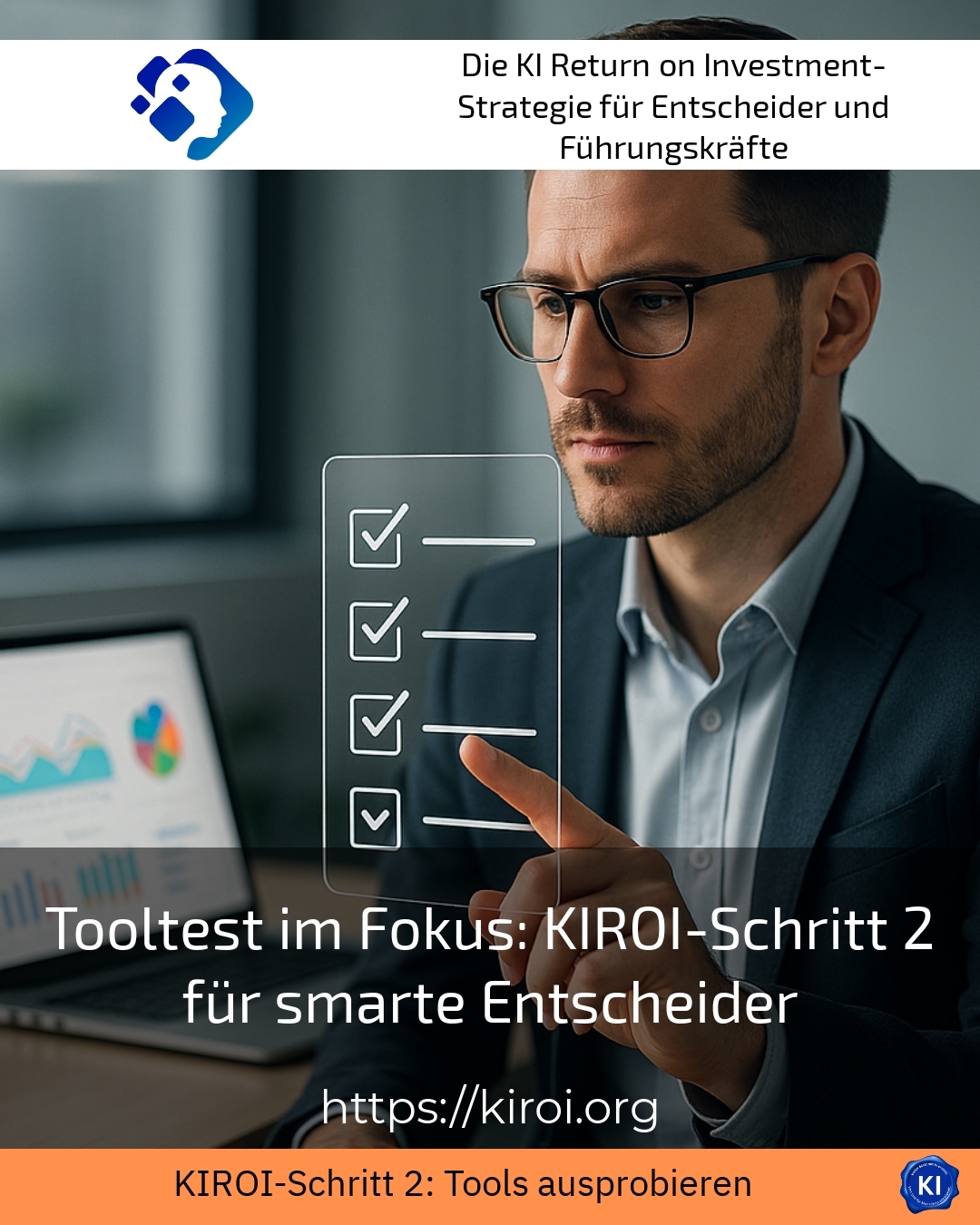The term Tooltest is at the centre of the second step in the KIROI process, which is becoming increasingly important for smart decision-makers in particular. It helps managers to select precisely those digital tools from the multitude that best suit their own corporate strategy and practical requirements. A successful Tooltest begins with a systematic analysis of individual needs and a clear definition of specific use cases. This ensures that the tested tools are not only functional, but also convincing in terms of integration and user-friendliness.
Tool test in KIROI step 2: Foundation for smart decisions
In the KIROI process, the Tooltest The second step provides a structured basis for the selection of software solutions that will accompany companies in the long term. The precise determination of requirements helps to focus the test phase. This is followed by the selection of potential tools, which are put through their paces in real or simulated projects with defined use cases. In addition to technical criteria, decision-makers pay particular attention to compatibility with existing systems and the possibility of customisation to company processes.
In the manufacturing industry, for example, it has been shown that early fault warning systems through the Tooltest can be successfully evaluated. Companies are testing AI-supported diagnostic tools that help to predict machine failures and avoid production downtimes. Companies are also using the Tooltest to test automation tools that enable competitive analyses and uncover keyword gaps. Office organisation teams, on the other hand, evaluate tools that automate routine tasks and can be seamlessly integrated into office environments.
Practical applications of the tool test in different industries
The process of Tool tests thrives on practical experience and continuous learning. In the manufacturing industry, companies use the test to evaluate digital early warning systems for machine operation. This increases efficiency and reduces downtimes. A medium-sized service company was also able to gain significant impetus for digital strategy development thanks to an SEO tool that was geared towards analysing the competition as part of the tool test.
In office organisation, a carefully conducted tool test facilitates the implementation of automation solutions that perform administrative tasks securely and efficiently. By specifically testing user-friendliness and data security, companies can ensure that the software used really does support everyday work and does not lead to additional burdens.
BEST PRACTICE with one customer (name hidden due to NDA contract) In a technical services company, the tool test allowed a targeted selection of an SEO tool with a strong focus on competition and keyword analyses. This allowed the digital presence to be sustainably improved and the market position to be strengthened against competitors. The support provided by transruptions coaching assisted the company in the professional evaluation of the test results and the targeted derivation of measures.
Significant advantages through structured tool tests
A structured Tooltest is more than just a functional test phase. It is an iterative process that promotes continuous learning and sustainable integration. Not only is the software tested for technical properties, but requirements such as user-friendliness, adaptability to internal processes and data security are also taken into account. Decision-makers can thus reduce uncertainties and create a transparent, documented basis for evaluation.
Tool tests also demonstrate their value in areas such as retail or healthcare: one retail company, for example, tested various e-commerce platforms in order to compare performance and customer satisfaction. In the healthcare sector, testing digital documentation systems helps to make processes more efficient and reduce error rates.
Here it is important to Tooltest should not be seen as a one-off event. Rather, the continuous readjustment and further development of the tools used is crucial in order to anchor them sustainably in the company and maximise their benefits for everyday life.
Tips for a successful tool test
Successful decision-makers recommend drawing up a clear requirements profile at the start of the tool test and linking this to the defined use cases. Relevant stakeholders should be involved at an early stage in order to incorporate different perspectives. The test environment should be designed to be as practical as possible so that real work situations can be simulated. Continuous documentation of the test results facilitates transparent decision-making.
It is also advisable to utilise external impulses and coaching services such as transruption coaching to support the process. This helps you to focus on the essentials and manage the testing process professionally. In this way, the tool test can not only facilitate software selection, but also contribute to the further development of corporate strategies.
My analysis
The Tooltest in KIROI step 2 is an essential element for companies that want to select digital solutions with sustainable benefits. It helps to systematically identify the right tools based on technical functions, user-friendliness and process integration. Experience shows that a structured and iterative test process forms the basis for successful digitalisation. Support and coaching also provide additional impetus to actively support topics such as integration and change management. Overall, the Tooltest quality of decisions and makes a significant contribution to the success of digital projects.
Further links from the text above:
Tool test in KIROI step 2: How managers find their AI tool
Focus on tool testing: How to succeed in step 2 of the KIROI process
Tool test in KIROI step 2: How decision-makers find the best
Tool test in KIROI step 2: How decision-makers find the best tools
Tooltest: Successfully selecting AI innovations with KIROI Step 2
KIROI step 2: Tool test - How decision-makers test AI solutions
Tool test: How to master KIROI step 2 smartly and efficiently
For more information and if you have any questions, please contact Contact us or read more blog posts on the topic Artificial intelligence here.















